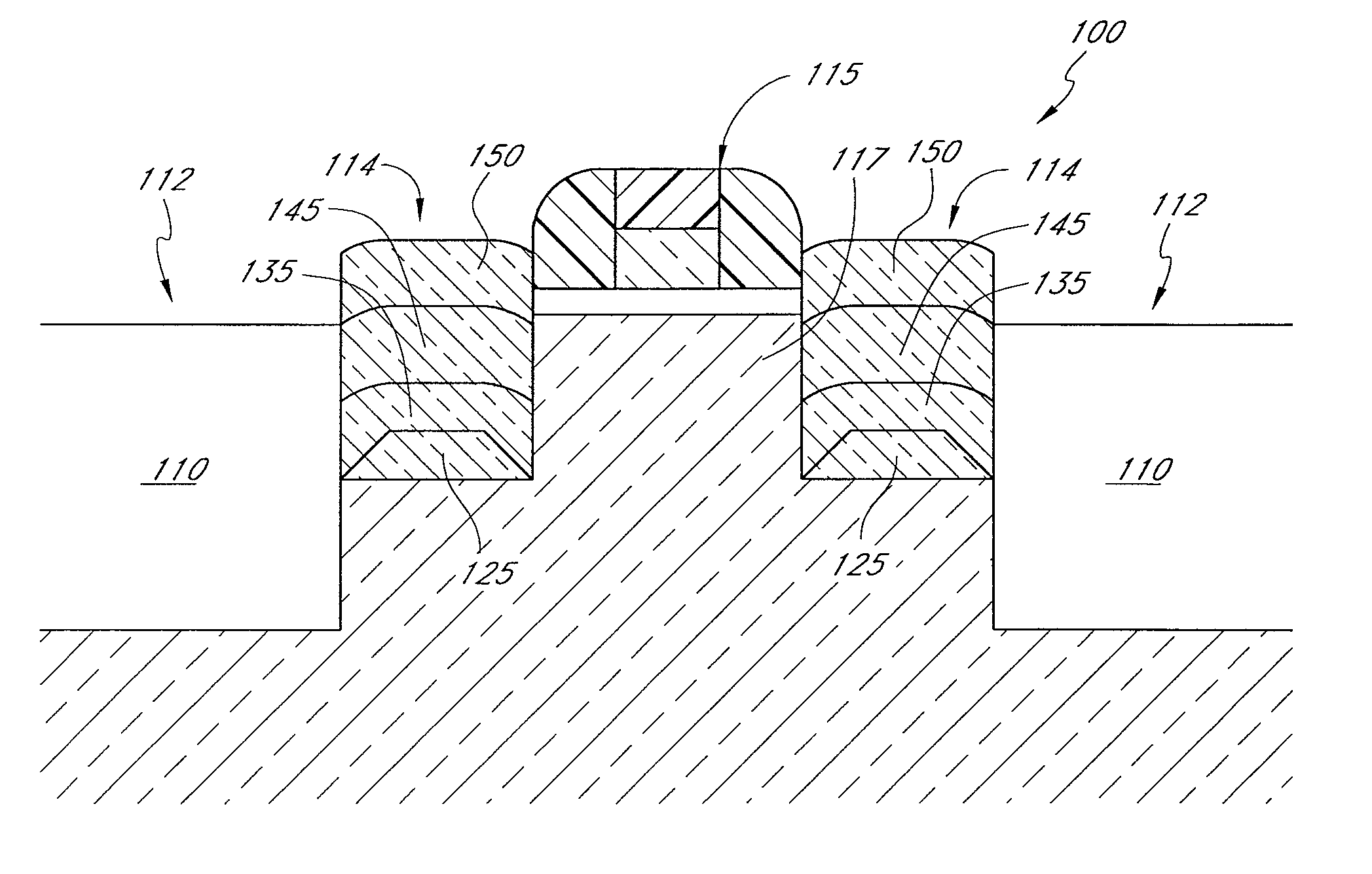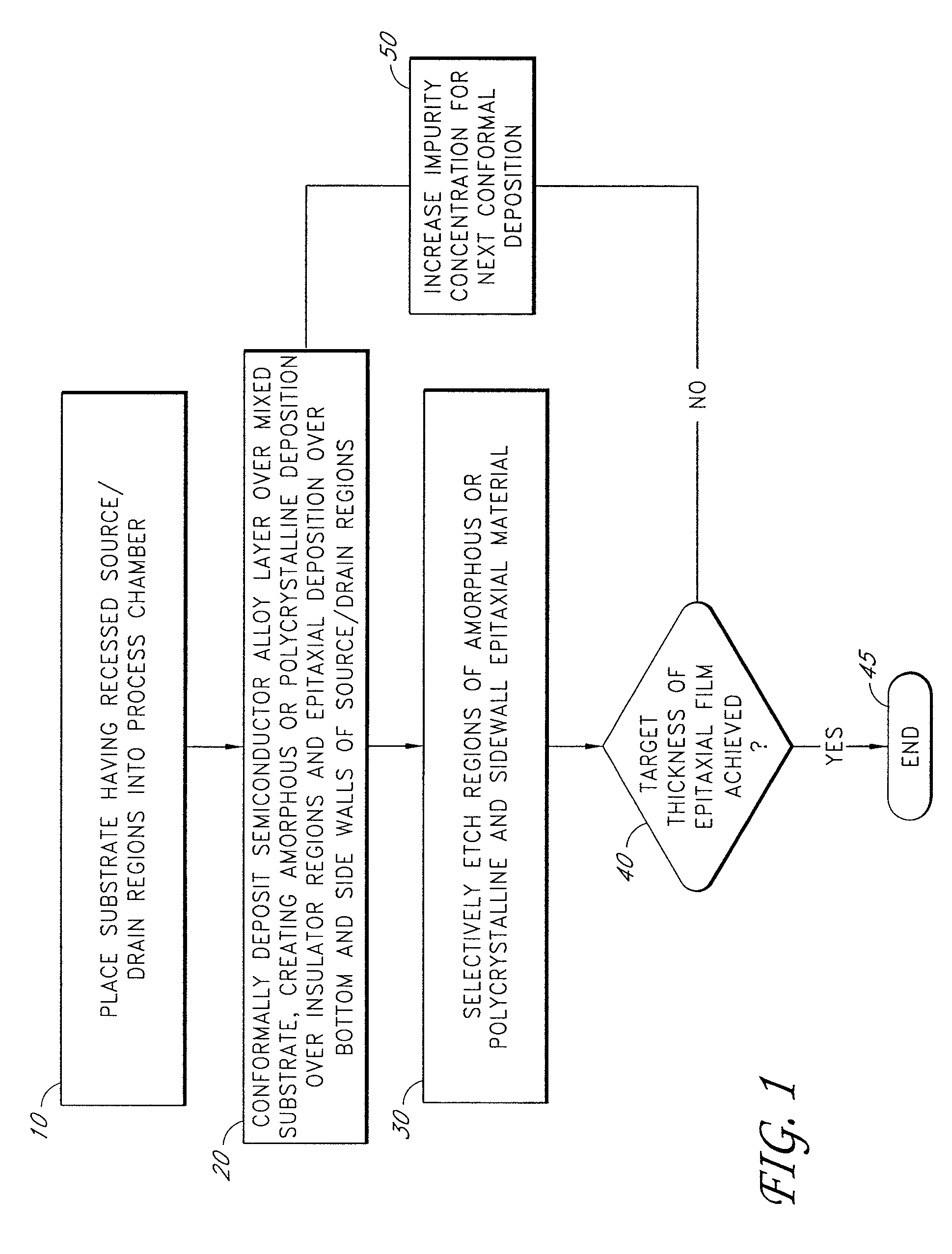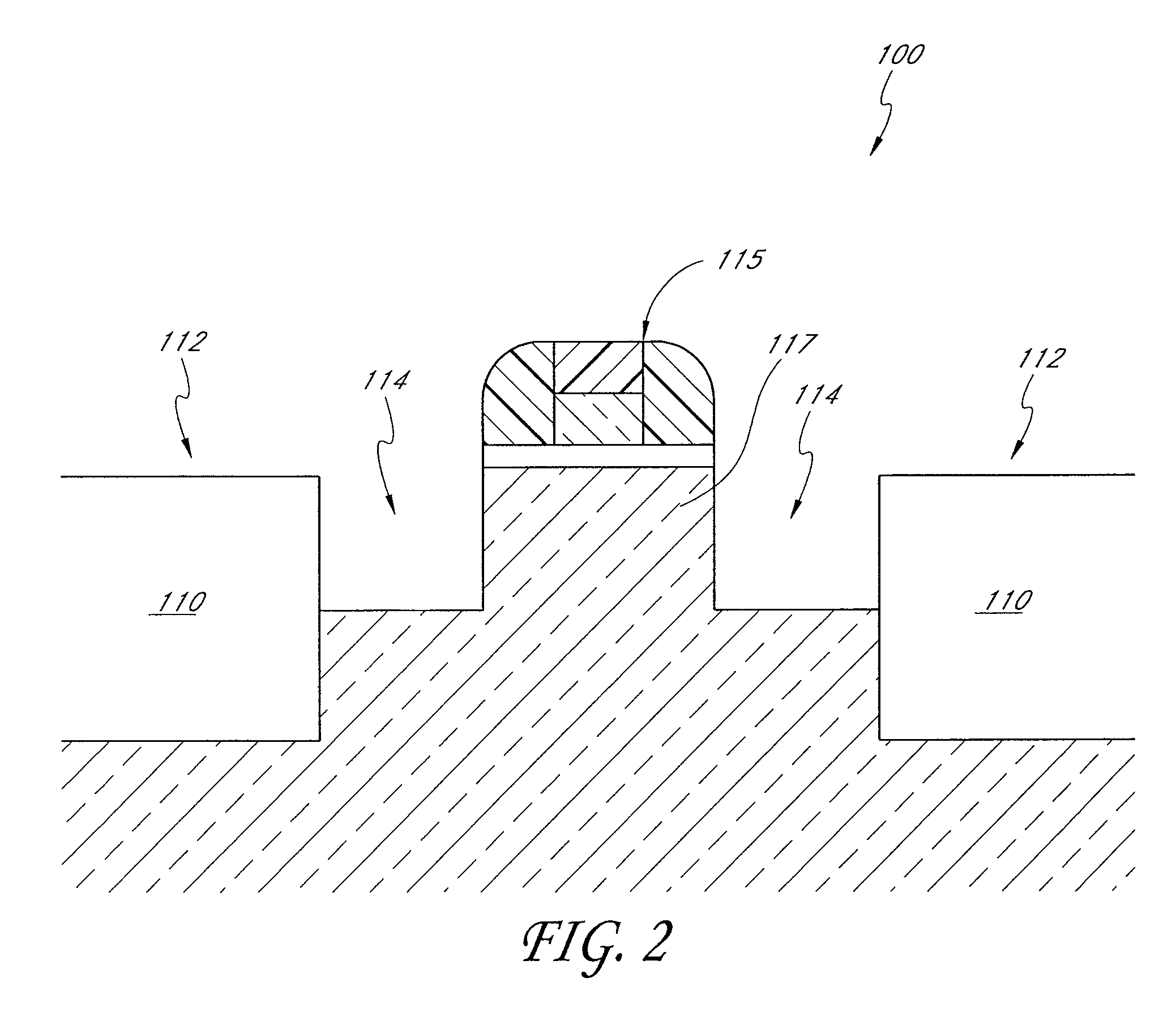Stressor for engineered strain on channel
a strainer and strain technology, applied in the direction of thin material processing, semiconductor devices, electrical devices, etc., can solve the problems of non-substitutional doping and complex substitutional doping in the pla
- Summary
- Abstract
- Description
- Claims
- Application Information
AI Technical Summary
Benefits of technology
Problems solved by technology
Method used
Image
Examples
Embodiment Construction
[0024]The term “impurity” is used herein to refer to additives, such as germanium or carbon, that alter the semiconductor lattice constant relative to silicon alone; the resultant semiconductor compound is often referred to as an alloy, or simply as a heteroepitaxial layer. “Dopants” can refer to either impurities or electrical dopants, such as phosphorous, arsenic, boron, or the like. The term “silicon-containing material” and similar terms are used herein to refer to a broad variety of silicon-containing materials, including without limitation, silicon (including crystalline silicon), carbon-doped silicon (“Si:C”), silicon germanium (“SiGe”), and carbon-doped silicon germanium (“SiGe:C”). As used herein, “carbon-doped silicon”, “Si:C”, “silicon germanium”, “SiGe,”“carbon-doped silicon germanium”, “SiGe:C” and similar terms refer to materials that contain the indicated chemical elements in various proportions and, optionally, minor amounts of other elements. For example, “silicon g...
PUM
 Login to View More
Login to View More Abstract
Description
Claims
Application Information
 Login to View More
Login to View More - R&D
- Intellectual Property
- Life Sciences
- Materials
- Tech Scout
- Unparalleled Data Quality
- Higher Quality Content
- 60% Fewer Hallucinations
Browse by: Latest US Patents, China's latest patents, Technical Efficacy Thesaurus, Application Domain, Technology Topic, Popular Technical Reports.
© 2025 PatSnap. All rights reserved.Legal|Privacy policy|Modern Slavery Act Transparency Statement|Sitemap|About US| Contact US: help@patsnap.com



